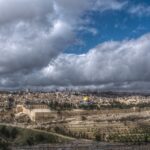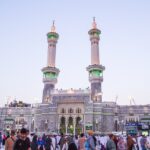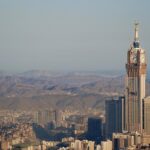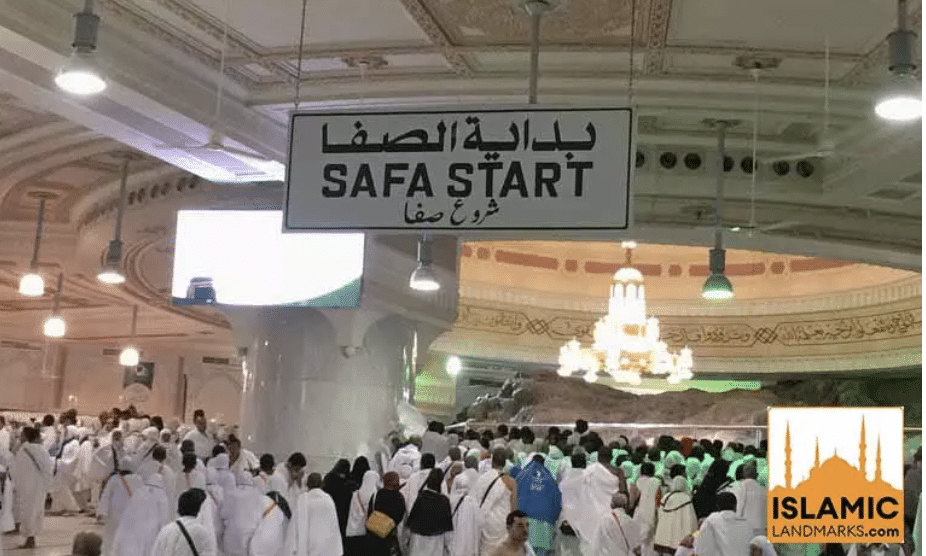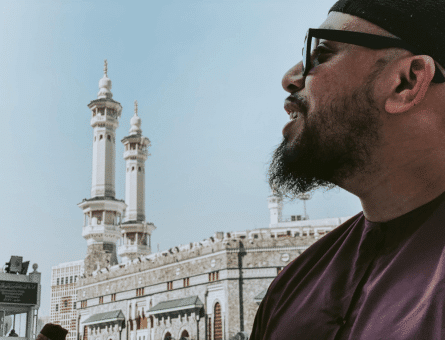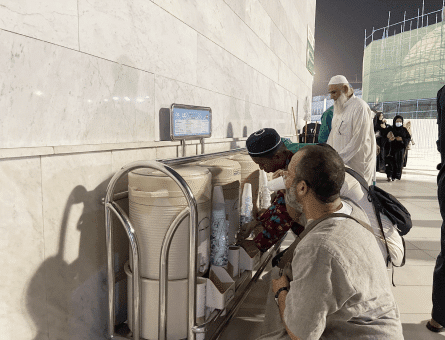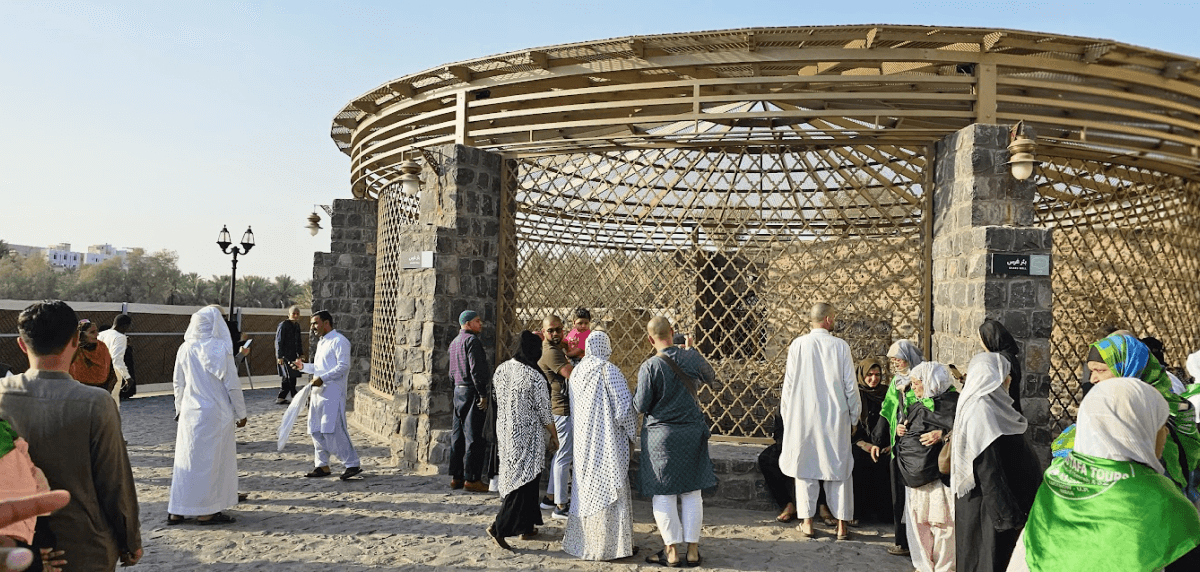Zamzam Well – Benefits, Facts and History
Representing the mercy of Allah SWT, the Zamzam well is one of the most enduring miracles in Islamic history. The Zamzam well first sprang approximately 4000 years ago under the feet of Prophet Ismail (AS) soon after his mother Hajrah (AS) – the second wife of Prophet Ibrahim (AS) – ran seven times between the hills of Safa and Marwa in search of water to save her thirsty child. Since then, Zamzam water is considered to be blessed and sacred. Read on to learn more about the sacred Zamzam well and its significance in Islam.
What Is the Zamzam Well?
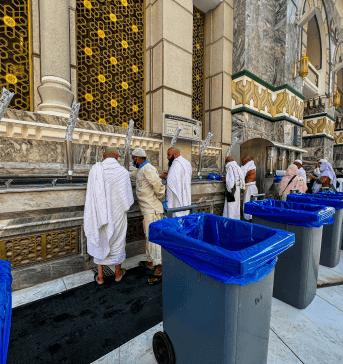 The Zamzam well is located 20 metres east of the Holy Kaaba within the boundaries of the Great Mosque (Makkah Masjid Al-Haram) in Saudi Arabia. The Zamzam well got its name when Hajrah (AS) commanded the overflowing spring water to stop. The term Zamzam literally means “stop flowing.” The water from the Zamzam well is considered to be the cleanest and purest water on the planet as it contains no fungus, bacteria, virus, germs, moss, or any other type of impurity.
The Zamzam well is located 20 metres east of the Holy Kaaba within the boundaries of the Great Mosque (Makkah Masjid Al-Haram) in Saudi Arabia. The Zamzam well got its name when Hajrah (AS) commanded the overflowing spring water to stop. The term Zamzam literally means “stop flowing.” The water from the Zamzam well is considered to be the cleanest and purest water on the planet as it contains no fungus, bacteria, virus, germs, moss, or any other type of impurity.
Moreover, compared to natural water, Zamzam water is rich in minerals, which gives it a very distinct taste. When visiting the Holy Kaaba for Umrah or Hajj, Muslims aim to drink from the Zamzam well as well as carry bottles filled with Zamzam back to their homeland. Prophet Muhammad (PBUH), on several instances, brought to light the healing properties of the water from the Zamzam well:
“The best water on the face of the earth is the water of Zamzam. In it is complete nourishment and healing from sickness.” (At-Tabarani)
“The water of Zamzam is (good) for whatever it is intended.” (Sahih Muslim)
Jaabir (RA) said, “I heard the Messenger of Allah (PBUH) say: ‘Zamzam is a cure for any purpose for which it is drunk.’” Another Hadith states, “If you drink it to quench a thirst, it will do so, and if you drink it to fill the stomach in place of food, it will do so, and if you drink it for a cure from some illness, it will do so.” (It-Haaf)
Ibn Abbas (RA) narrates that Prophet Muhammad (PBUH) on drinking water from the Zamzam well prayed, “O Allah, grant me beneficial knowledge, abundant sustenance and a cure from all diseases.”
Hajrah (AS)
Hajrah (AS) was the second wife of Prophet Ibrahim (AS). While living with his first wife, Sarah (AS) in Egypt, Prophet Ibrahim (AS) was unable to have a child for many years and so his wife suggested that he should get married to Hajrah (AS), who was a servant at that time. Soon after tying the knot, Allah SWT blessed Prophet Ibrahim (AS) and Hajrah (AS) with a beautiful son, Prophet Ismail (AS).
Allah SWT tests those whom He loves and so He commanded Prophet Ibrahim (AS) to leave his beloved wife, Hajrah (AS), and their long-awaited son, Prophet Ismail (AS) in the middle of a desert. Even though Hajrah (AS) was reluctant at first, she had faith in the superiority and mercy of Allah SWT and so she did as what was commanded.
“O you who believe! Let not your properties or your children divert you from the remembrance of Allah SWT. And whosoever does that, then they are the losers.” (Holy Quran, 63:9)
Mount Safa and Marwah
The story that led to the miracle of the Zamzam well is well-known. However, even today the tale of bravery, dedication, and faith of Prophet Ibrahim (AS) and Hajrah (AS) for what they were willing to do for the sake of Allah SWT, gives chills down one’s spine.
Fulfilling the command of Allah SWT, Prophet Ibrahim (AS) left Hajrah (AS) and his son, baby Ismail (AS) with a limited amount of food and water in the middle of nowhere. Ibn Abbas (RA) narrates, “Ismail’s mother went on suckling Ismail and drinking from the water. When the water in the water-skin had all been used up, she became thirsty and her child also became thirsty. She started looking at him tossing in agony – and she left him, for she could not endure looking at him. She found that the mountain of As-Safa was the nearest mountain to her on that land.
She stood on it and started looking at the valley keenly so that she might see somebody, but she could not see anybody. Then she descended from As-Safa and when she reached the valley, she tucked up her robe and ran in the valley like a person in distress and trouble, until she crossed the valley and reached the Al-Marwa mountain, where she stood and started looking, expecting to see somebody, but she could not see anybody.” (Tafsir Ibn Kathir)
It is said that seeing her child desperate for milk, Hajar (AS) ran between the Safa and Marwa hills seven times to search for help or food. The dedication and faith resulted in Allah SWT sending Angel Gabriel (AS) and the miracle of the Zamzam well.
The Messenger (PBUH) of Allah SWT said, “The sign [that differentiates] between us and the hypocrites is that they do not drink their fill from Zamzam.” (Ibn Majah)
Who first looked after the Zamzam well?
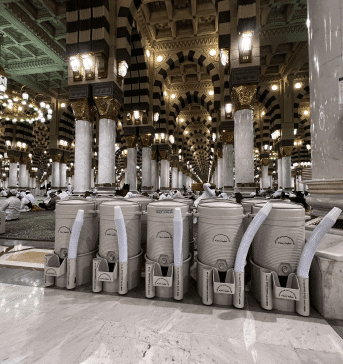 According to Islamic scholars, it was Prophet Ismail (AS) and his descendants who first looked after the Zamzam well. Soon after the Jurhum tribe arrived and settled in the old city of Makkah, Prophet Ismail (AS) married one of their daughters. As a result of which, it was the children of Prophet Ismail (AS) who got the great honour and responsibility to look after the Zamzam well and the Holy Kaaba.
According to Islamic scholars, it was Prophet Ismail (AS) and his descendants who first looked after the Zamzam well. Soon after the Jurhum tribe arrived and settled in the old city of Makkah, Prophet Ismail (AS) married one of their daughters. As a result of which, it was the children of Prophet Ismail (AS) who got the great honour and responsibility to look after the Zamzam well and the Holy Kaaba.
However, some years after, in order to gain control of Makkah, a major civil war was fought between the powerful tribes of that area. It is said that the people of the Jurhum trim, buried their valuables and weapons (which were made of silver and gold) in the Zamzam well and covered it.
In simpler words, they basically buried the well so that it wasn’t discoverable. The Zamzam well remained hidden for centuries to come, resulting in people completely forgetting about its existence.
The Zamzam well is rediscovered (Abdul Muttalib)
Several legends and myths have existed about the Zamzam well even before the birth of Prophet Muhammad (PBUH). One such legend states that Abdul Muttalib, the grandfather of the Prophet Muhammad (PBUH) had the same dream for three consecutive nights in which he was digging up something.
However, the object wasn’t made clear. On the fourth night, Abdul Muttalib was commanded to go and dig the Zamzam well that had been hidden for decades.
The dream left Abdul Muttalib concerned and so he started asking around about the Zamzam well. It was then that he found out that it was a miraculous well, the water of which will never run out. He was also told to look for the ground with anthills and pecking crows. Following this command, Abdul Muttalib and his son Al-Hadith search for the place and started digging up the ground.
The father-son duo soon unearthed silver and gold weapons and valuables (silver coins and bricks of gold) that had been buried there by the Jurhum tribe. The deeper the dug the more hopeful Abdul Muttalib got until he finally reached the top of the Zamzam well.
Discovering the miracle, Abdul Muttalib and his son shouted the Takbeer as they realized that the well, hidden by their forefathers has finally been rediscovered.
The people of Makkah granted Abdul Muttalib the custodianship of the Zamzam well along with all the valuables that were found. It is believed that Abdul Muttalib melted the silver and gold to build the door of the Holy Kaaba.
Abu Talib is in charge of the well
After Abdul Muttalib passed away, the custodianship of the Zamzam well was granted to Abu Talib, his son. Some of the important responsibilities that came with the honour included allocating containers for the Zamzam water, setting up tents, serving the water to the Hujjaj, hiring workers, and managing the water distribution. However, all of this required a huge financial investment which ended with Abu Talib going bankrupt.
Therefore, he requested his brother Abbas to give him a loan of 10,000 dirhams. Once again, most of the money was spent on the Hujjaj and so Abu Talib took the loan again twice. The fourth time he asked Abbas for a loan, Abu Talib’s brother asked him to hand over the custodianship as he was unable to repay the previous loans.
Custodianship to Abbas and his family
Soon after Abbas passed away, the custodianship was subsequently passed down the family tree; Abdullah (son of Abbas), Ali (son of Abdullah), Dawood (son of Ali), Sulaiman (son of Dawood), and Isa (son of Sulaiman).
Isa passed on the custodianship to Al Mansoor, his brother who was the king. The Zamzam well was then handed over to the Umayyad dynasty.
Where is the Zamzam well located?
The Zamzam well is situated 21 metres from the Holy Kaaba, towards the side of the Station of Ibrahim (Maqam-e-Ibrahim) in the courtyard of Masjid Al-Haram, Makkah, Saudi Arabia. The water from the Zamzam well comes from two springs; one located near Mount Abu Qubais and the other from the direction of the Holy Kaaba.
Miracles of Zamzam water
The Zamzam water history is well known in the Muslim community. Left in a desert in Makkah, by Prophet Ibrahim (AS), Hajar (AS) ran between the hills of Safa and Marwa in desperation, seeking water, food, and help.
She ran seven times before hearing the voice of Angel Gabriel (AS) who under the command of Allah SWT miraculously dug the earth using his wing to reveal the Zamzam well. Even today, the Zamzam well is found in the same place and is said to have great healing properties.
Ibn Majah (RA) reported that Prophet Muhammad (PBUH) when asked about the right way to drink Zamzam water said, “When you drink from Zamzam, turn to face the qiblah and mention the name of Allah SWT, drink three draughts and drink your fill of it. When you have finished, then praise Allah SWT.”
Benefits of Zamzam Water
There is no comparison of the natural bottled or drinking water with the holy water from the Zamzam well. Some health benefits of the Zamzam water are as follows:
Zamzam water enhances the energy levels in our cells
Dr Knut Pfeiffer, a German scientist and the head of the largest medical centre in Munich has been studying the Zamzam water benefits and its effects for a long time. During his research, he found out that drinking Zamzam water strengthens the cell system and increases energy levels in the human body.
Zamzam water encourages the growth of healthy bones
Zamzam water is said to have calcium in abundance. Because of this, it affects the human body in a positive way by promoting the growth of bones and providing sufficient vitamins and minerals to cells.
Zamzam water is the purest form of water on Earth
Dr Yahya Koshak while using ultraviolet tech to test water from the Zamzam well found out that it is not only completely bacteria- and germ-free but it also has high levels of fluoride. Moreover, compared to the water from the French Alps (357mg/l bicarbonates), Zamzam water contains an adequate amount of bicarbonates (366mg/l).
Prophet Muhammad (PBUH) referring to the purity of Zamzam water said, “The best water on the face of the earth is the water of Zamzam; it is a kind of food and a healing from sickness.” (Saheeh al-Jaami’, 3302)
It was reported that “Prophet Muhammad (PBUH) drank it, did wudu with it, and poured it on his head. He used to carry Zamzam water in small vessels and large containers in order to pour it on the sick and give it to them to drink.” (Al-Silsilat al-Saheehah, 883)
Will the water from the Zamzam well ever run out?
The Zamzam well has been providing a consistent water supply for more than 4000 years which has brought light to the question, “Will the Zamzam water ever run out?”
The one-word answer to this question is “No.” Abbas Sharaqi, a Geology professor said that the water of the Zamzam well will not deplete because its reservoir is naturally connected to the renewable groundwater supply, minimising chances of the water drying up in the future.
The professor further added that the total depth of the Zamzam well is 35 metres, 21 metres covers deep rocks, and 14 metres of sediment, making it nearly impossible for the well to completely dry out until and unless the climatic conditions of Saudi Arabia drastically change.
The Prophet Muhammad’s (PBUH) heart is washed with Zamzam water
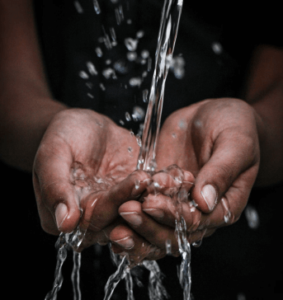 According to Islamic history, it is said that one day while the young Prophet Muhammad (PBUH) played with his friends near Haleemah as-Sa’diyah’s house, Angel Gabriel (AS) appeared. He made Prophet Muhammad (PBUH) lie down, opened his chest, and extracted a portion of flesh from his heart, saying “This is the portion of Shaitan in you.” Angel Gabriel (AS) then placed the young boy’s heart in a golden tray and washed it using the holy Zamzam water, before putting it back inside.
According to Islamic history, it is said that one day while the young Prophet Muhammad (PBUH) played with his friends near Haleemah as-Sa’diyah’s house, Angel Gabriel (AS) appeared. He made Prophet Muhammad (PBUH) lie down, opened his chest, and extracted a portion of flesh from his heart, saying “This is the portion of Shaitan in you.” Angel Gabriel (AS) then placed the young boy’s heart in a golden tray and washed it using the holy Zamzam water, before putting it back inside.
Anas bin Malik regarding this even narrates, “Gabriel (AS) came to the Messenger of Allah (PBUH) while he was playing with his playmates. He took hold of him and lay him prostrate on the ground and tore open his breast and took out the heart from it and then extracted a blood-clot out of it and said: That was the part of Satan in thee. And then he washed it with the water of Zamzam in a golden basin and then it was joined together and restored to its place. The boys came running to his mother, i. e. his nurse and said: Verily Muhammad has been murdered. They all rushed toward him (and found him all right) His colour was changed, Anas said. I myself saw the marks of the needle on his breast.”
Zamzam well mentioned in the Bible
When talking about the event of Hajrah (AS), and Prophet Ismail (AS) passing through a deserted valley, the Bible also makes a reference to the miracle of the Zamzam well: “Blessed is the man whose strength is in Thee; in whose heart are the ways of them who passing through the valley of Bacca make it a well.” [Psalm 84:5-6. The Holy Quran also refers to Makkah as Bacca in several instances]
Summary – Zamzam well
Located in the Mataf area within the premises of Masjid Al-Haram in Makkah, Saudi Arabia, the Zamzam well is a thriving miracle. Being a result of the miracle of Prophet Ismail (AS) and Hajrah (AS), the Zamzam well has supplied water for more than 4000 years. Even today, when Muslims visit the Holy Kaaba for Hajj or Umrah, they commemorate the act of Hajar (AS) running between mount Safa and Marwa (Saee) and collect water from the Zamzam well as a souvenir for their family and loved ones. The Zamzam water is said to have miraculous healing properties.
Explore The New Pilgrim App
The Ultimate App
for Hajj and Umrah!





